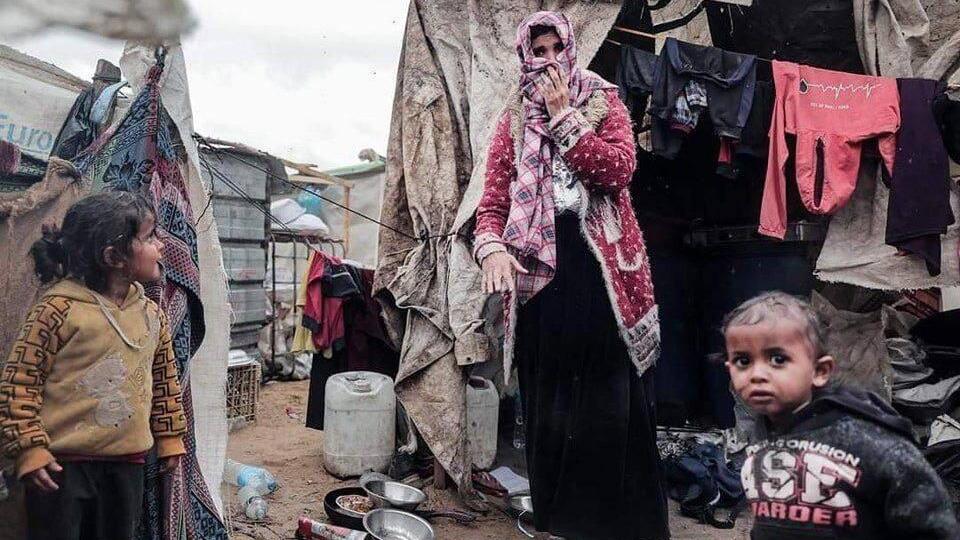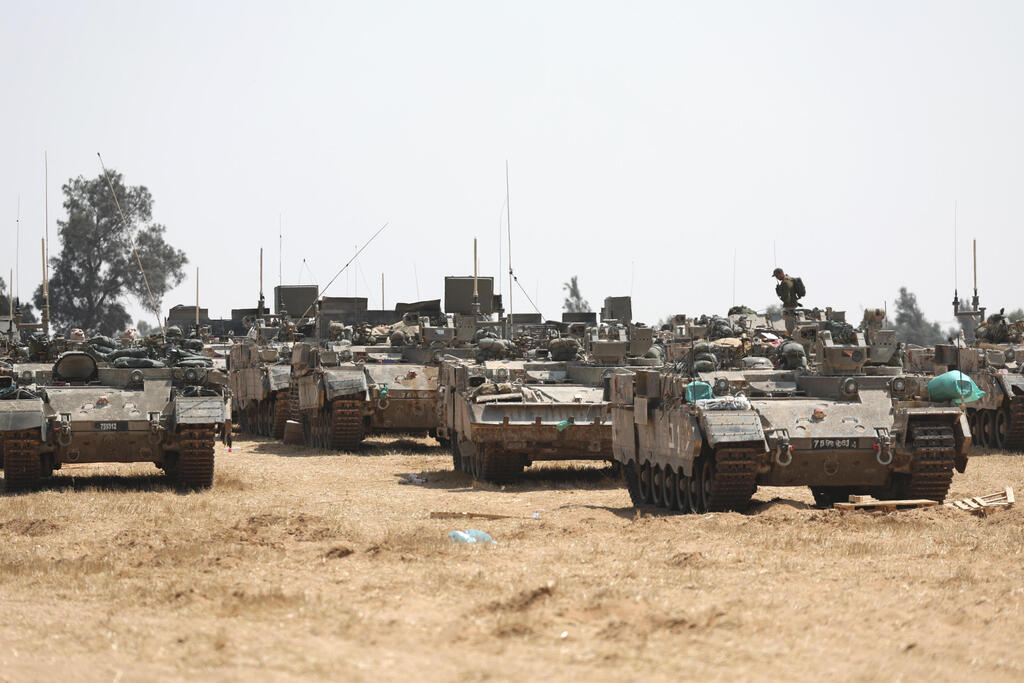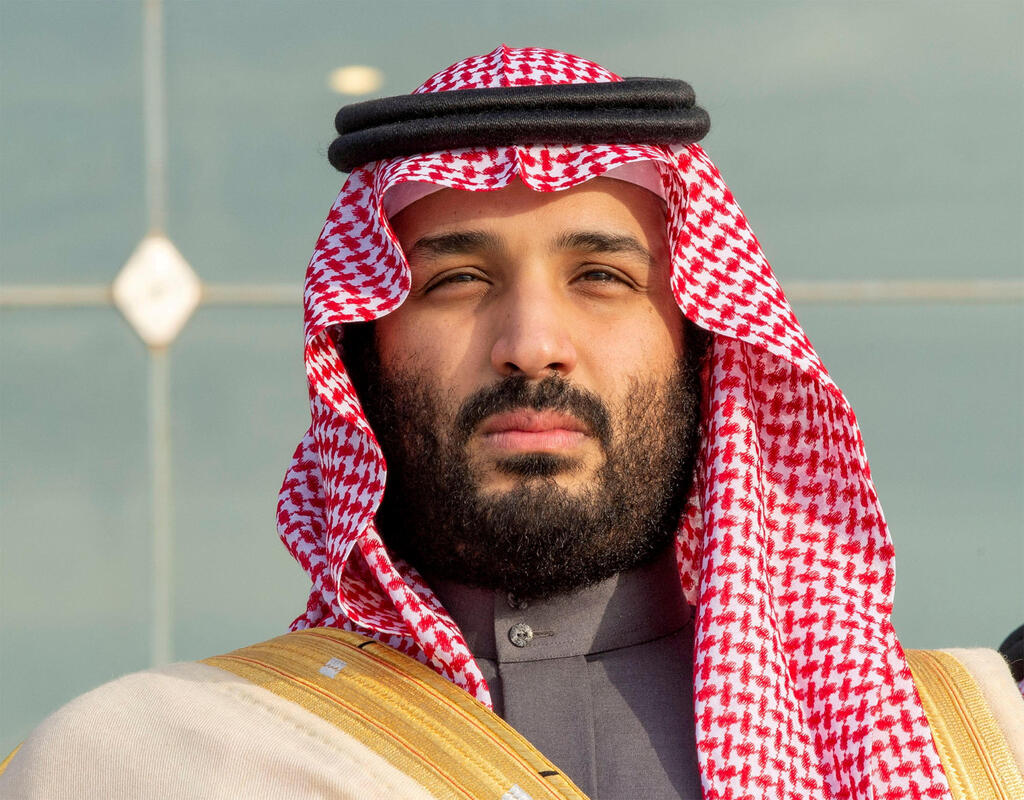Getting your Trinity Audio player ready...
On February 10, a significant announcement from the Prime Minister's Office in Israel echoed across the globe. It revealed that Prime Minister Benjamin Netanyahu had ordered the IDF to gear up for an operation in the southern Gaza Strip city of Rafah.
This order came despite Rafah being overwhelmed with over a million displaced Palestinians who had sought refuge there amid the ongoing war. While the international community, including the UN and the U.S., expressed concern over this directive, the IDF appeared unphased, having been briefed and prepared with entry plans for the city three weeks prior to the announcement.
In the following months, Netanyahu continued to signal the impending operation, suggesting that it was a necessary measure on the path to achieving "total victory" over Hamas. His statements came more frequently, each hinting that the start of the operation was just around the corner. Now, three months after his initial announcement, the threat phase has reached its end and the moment of truth is fast approaching.
Israeli officials assess that in the coming hours or days, a decision will be made that will shape the conclusion of the campaign in the Gaza Strip: either a hostage deal with Hamas or an IDF incursion into Rafah.
Meanwhile, the IDF ramped up its strikes around the city and Israeli armored vehicles were sighted not far from it, suggesting that the resolution to this prolonged standoff might be closer than ever.
Origins
Nestled at the southern tip of the Gaza Strip, Rafah boasts a rich history that stretches back to the 15th century BCE. Historically, it was a crucial stop along the "Way of the Sea," facilitating the passage of armies, merchants and travelers heading north or east from Egypt.
Rafah fell into Israeli hands during the Six-Day War and was under Israeli administration until its partial withdrawal from the Sinai Peninsula. Following this, the city was split: the northern section, spanning 64 square kilometers, stayed under Israeli control, while the southern segment was transferred to Egyptian governance.
Strategic considerations
When the peace agreement between Israel and Egypt sliced Rafah in twine, it not only divided the city but also fractured families and disrupted established commercial, personal and other essential ties. Formally, the Rafah border crossing was established to help maintain these connections.
Informally, an intricate network of tunnels became the lifeline, initially used for smuggling and other civilian needs, but eventually exploited for terrorist activities like arms trafficking and facilitating terrorist movements in and out of the Palestinian enclave.
Devastation in Rafah
(Video: Reuters)
Rafah is strategically positioned at the core of the Philadelphi Corridor, a critical 9-mile stretch along the border between Israel and Egypt, extending from the Mediterranean Sea eastward. This corridor serves as a crucial conduit for terrorist groups operating in the Gaza Strip, enabling not just the smuggling of arms but also the movement of goods that fund their operations and help assert their dominance over the local population.
There's a prevailing belief in Israel that by gaining control over this corridor or effectively neutralizing it—perhaps using an underground barrier—the region could isolate the Gaza Strip and cut off Hamas' connections to the Sinai Peninsula.
Displacing over a million people
As of October 7, Rafah was home to approximately 250,000 residents. However, during the peak of the war, the UN reported that the population surged to around 1.3 million. This dramatic increase was largely due to the displacement of people from the northern and central parts of the territory, who were compelled to relocate following intense fighting and evacuation orders from the IDF.
By early April, following the IDF's withdrawal from Khan Younis, tens of thousands of displaced Palestinians began to migrate northward from Rafah, although the true numbers are unknown.
The displaced have found shelter in various accommodations in Rafah; some are housed in apartments or with relatives, but the vast majority have resorted to living in makeshift tents set up in parks, stadiums and public squares. The city's western and central areas are notably more congested, while the eastern parts, closer to the Israeli border, are more sparsely populated.
The humanitarian implications of any potential military action in Rafah are profound. Engagements with Hamas and Palestinian Islamic Jihad, deeply entrenched in the city's narrow alleys and underground tunnels, pose severe risks not only to the fighters but also to the hundreds of thousands of civilians in close proximity.
Such clashes could potentially result in significant civilian casualties, drawing sharp criticism from the international community. Even if the Israeli strategy assumes a two to three-week period for evacuating most residents to a designated humanitarian zone between Al-Mawasi and Khan Younis, the feasibility of conducting immediate military operations within the city remains uncertain.
World leaders have voiced their concerns regarding the situation in Rafah. UN Secretary-General Antonio Guterres has urged all stakeholders to work toward preventing any attacks on the city. Similarly, World Health Organization Director-General Dr. Tedros Adhanom Ghebreyesus has highlighted the potential for a humanitarian disaster should a full-scale assault happen.
Despite these international pleas, Israeli authorities have maintained their stance. The IDF's Arabic spokesperson recently announced an expansion of the humanitarian zones within the Gaza Strip, emphasizing ongoing efforts to address the humanitarian needs amid war, asserting that the battle is against Hamas, not Gaza's population as a whole.
Possible scenarios moving forward
Mediators might successfully broker a deal between Israel and Hamas in the near future, potentially leading to the release of all Israeli hostages. This agreement could also see a significant number of Palestinian prisoners freed, a long-term cease-fire established and displaced Gazans returning to the northern parts of the territory.
Additionally, it might involve a scale-back of military presence in several points where IDF forces are currently concentrated. Should this agreement materialize, plans for a military operation in Rafah would likely be shelved for the foreseeable future.
This potential deal aligns with recent U.S. diplomatic efforts and could pave the way for normalization agreements with Saudi Arabia, bolstering a regional alliance against Iran and its regional proxies. A significant aspect of the deal could involve empowering the Palestinian Authority to take a more prominent role in Gaza, potentially replacing Hamas governance. This shift would effectively cancel any planned military actions in Rafah as part of a broader strategy to stabilize the region.
There remains a possibility that Hamas might reject the deal's terms. Such a refusal would place Israel in a precarious position, lacking both the return of its hostages and international support for a military strike in Rafah. However, Israel might still feel compelled to intervene militarily to dismantle Hamas's local infrastructure and disrupt arms smuggling operations from Sinai, highlighting the complex dynamics at play in these negotiations.
IDF plans for gradual entrance
Seemingly detached from diplomatic maneuvers, IDF has been methodically preparing for an incursion into Rafah for months. Chief of Staff Herzi Halevy has greenlit all operational plans for both the city and its central towns. Deployment has already begun with some IDF tanks strategically positioned in the border regions to the south, ready for action.
Prime Minister Netanyahu and US Secretary of State Blinken
(Video: GPO)
The operation is planned to roll out in phases, synchronized with the evacuation of the local population, allowing forces to advance into areas as they are cleared. This staged approach also maintains flexibility, leaving room to pause operations should negotiations or a deal become viable.
Recent experiences have sharpened awareness within Israel that ground operations could jeopardize hostages believed to be held in Rafah, used as human shields by top Hamas officials. Despite potential forthcoming agreements, it's anticipated that Yahya Sinwar might retain some hostages, likely soldiers, as a lifeline to ensure both his and Hamas' continued existence.
Echoing Bibi
Netanyahu isn't the lone voice in Israel's corridors of power pushing for a military offensive in Rafah. His coalition allies, Defense Minister Yoav Gallant along with right-wing stalwarts Bezalel Smotrich and Itamar Ben-Gvir, have been vocal and insistent about the necessity of this operation. The latter duo has even gone as far as threatening to topple the government should the operation falter or fail to launch.
Contrasting this hawkish stance, a more measured tone resonates from the war cabinet's moderate wing. Benny Gantz, who had previously concurred with the need for action in Rafah, has pivoted his stance amidst whispers of a potential deal with Hamas, recently stating that retrieving captives holds greater importance than the military operation.
Gadi Eizenkot has been even more direct, critiquing the pressure from Smotrich and Ben-Gvir with a stark declaration: he refuses to partake in a government swayed by political maneuvering rather than strategic necessity. This divergence in views paints a complex picture of a government grappling with the intricate balance of immediate security needs and long-term diplomatic engagements.
Biden's angle
In a recent article, Thomas Friedman of the New York Times, who is often aligned with President Joe Biden's perspective, put Israeli Prime Minister Netanyahu in the spotlight. He posed a significant choice between focusing on either "Rafah or Riyadh". This choice hints at a broader U.S. strategy that prefers diplomacy with Hamas leading to normalization with Saudi Arabia over further conflict.
Hamas released a video of the hostages
The U.S. has been vocal about its concerns regarding an Israeli assault on Rafah, a densely populated area where a significant portion of Gaza's residents live. Secretary of State Antony Blinken, on his trip to Israel, underscored the risks involved and the lack of a clear civilian evacuation plan. He was forthright in offering alternatives to military action.
With an election year in full swing, the Biden administration is careful to avoid actions that might upset key voter blocks, including Muslims in crucial states. This cautious stance is echoed by other Western nations, which also stand against an aggressive move in Rafah, highlighting a shared concern for escalating military tensions in the area.
Is Hamas wary of IDF operating in Rafah?
Recently, Hamas has ramped up its psychological tactics against the Israeli public by releasing distressing videos of captives Hirsh Goldberg-Polin, Keith Siegel and Omri Miran. The intent behind these releases—whether to push forward a desired deal or out of fear of an IDF operation in Rafah—is still up for debate.
Throughout the week, the group has been vocal about the potential repercussions of any military actions in Rafah. The military wing of Hamas issued a stark warning in Hebrew, stating, "Israel will sink in the sands of Rafah and the flames of its ambushes."
Jihad Taha, a spokesman for the group, further emphasized the stakes, noting, "Any attack on Rafah will have major implications on the reality of the displaced, the continuation of negotiations, and blocking the path to any agreement."
Izzat al-Rishq, a member of the political bureau, expressed a defiant message: "Netanyahu and all his supporters should be ashamed. They will not achieve through pressure and political maneuvers what they did not achieve in combat. They have dropped tons of explosives on Gaza and have not broken the resistance. This is either a victorious Jihad or death as martyrs."
El-Sisi's subtle input
From the onset of the conflict, Egypt has voiced significant worries about the deteriorating humanitarian conditions in Gaza, fearing a potential surge of refugees into its own borders, particularly from the adjacent city of Rafah.
President Abdel Fattah el-Sisi has been cautioning Israel about any military actions in Rafah since February, a stance echoed recently by Egypt’s Foreign Minister Sameh Shoukry and Prime Minister Mostafa Madbouly, who highlighted, "Any attack on Rafah will lead to a disaster and will cause the displacement of Palestinians seeking a safe place."
Over the recent weekend, these concerns were visually emphasized during el-Sisi’s visit to the Egyptian Military Academy, where a video showing cadets studying the Israeli Merkava tank surfaced online. This sparked intense media discussions in the Arab world regarding whether the timing of this release served as a covert warning to Israel amid its threats to enter Rafah. The debate intensified after the images were abruptly deleted from online platforms.
Simultaneously, the London-based, Saudi-owned "Asharq Al-Awsat" newspaper reported that Egypt’s Intelligence Chief Diaa Rashwan issued a warning about a potential "reoccupation" of the Philadelphia Corridor, suggesting such a move would gravely compromise Egypt-Israel relations.








